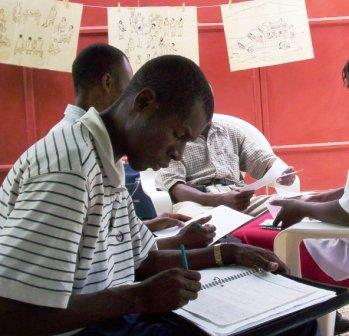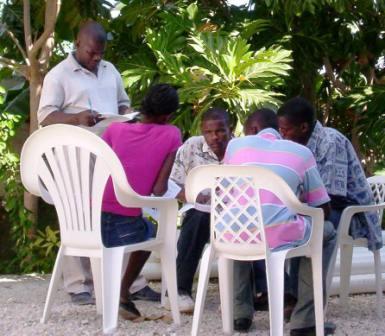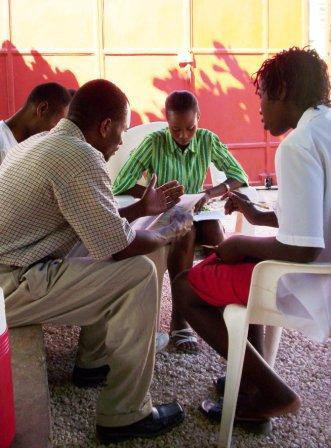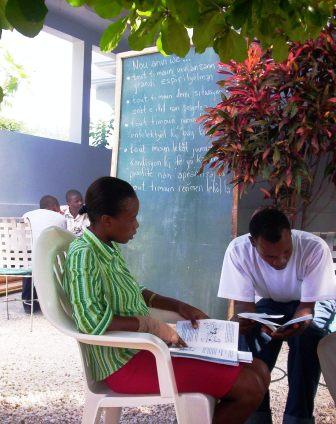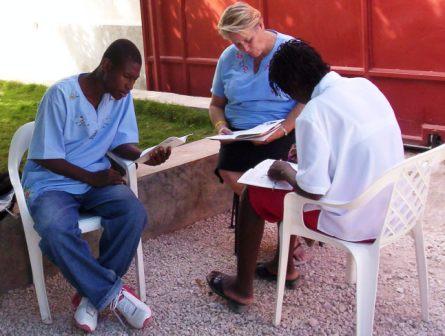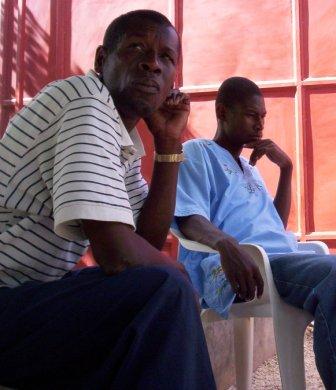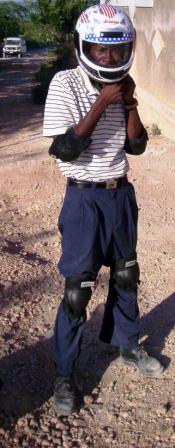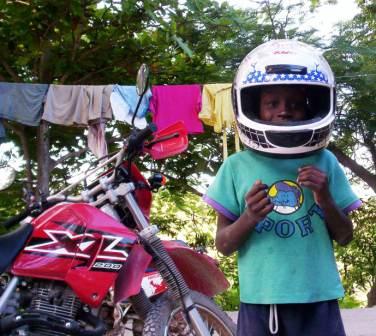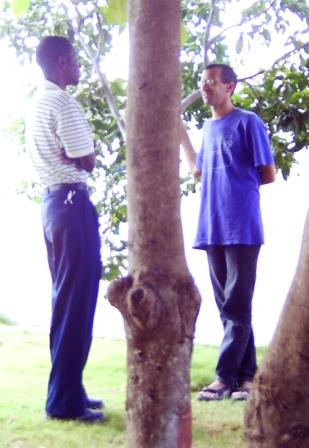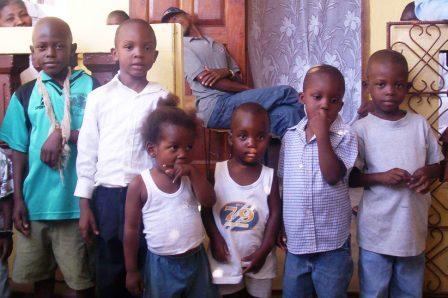I’ve never much liked the story of the Lion and the Mouse. It’s about a mouse that falls into the clutches of a lion. The Great King of Beasts then releases the mouse because he’s amused by the mouse’s claim that he’ll return the favor some day. That day comes when the lion is caught in a hunter’s net and the mouse chews through the rope to set him free. I suppose they all live happily ever after.
What I haven’t liked about it is that I don’t really have questions about it, at least none that seem worth asking a Wonn Refleksyon group. I don’t want to feign interest. I’ve never been good at feigning anything. So the challenge for me every time I use the text is to find a way to engage myself in the possibilities for conversation that it offers.
I had to smile to myself when Frémy met before I left for my trip to the States to figure which of us would be responsible for which text in our work with the women of Kofaviv. He would be going to Guadeloupe to see his wife and son, and our trips would be slightly out of sync, so each of us would have meetings to manage with the group alone. The text that fell to me was the story of the Lion and the Mouse. It seemed all the funnier since in the sequence we use it falls right between two texts I like very much.
Kofaviv is the Komisyon Fanm Viktim pou Viktim which is to say the Commission of Women Victims for Victims. It was established by women who suffered rape and other forms of violence during the coup d’état years of the early 90s. They offer health and counseling services to women in the poorest neighborhoods of Pòtoprens, particularly women who are victims of violence. They also work towards organizing those women. Their leaders asked Frémy and me to prepare about twenty of the women to run Wonn Refleksyon groups in the various neighborhoods, and we’ve been working together for about a month and a half. Each week we do two things: First, we lead a discussion using the guidebook for leading discussions that a group of us created a couple of years ago; then we read the day’s lesson plan together and reflect on how Frémy and I used it to lead the discussion. Our goal is for the women to feel ready to use the guidebook to lead discussions on their own.
I hadn’t seen the women for a couple of weeks, so I was excited on my way to see them. I got to their inconspicuous Pòtoprens office and was pleased to see that they had acquired chairs. Our first meetings had been held sitting in a circle on the floor. There was nothing wrong with meeting that way and, in fact, it established an ease among us that might have otherwise been hard to achieve, but the fact that they had been able to find the money to buy chairs was a good sign. When they started our session by distributing nametags, including one marked “Steeve” for me, this seemed like an even better sign. Neither Frémy nor I had suggested nametags. Frémy’s great at picking up names, and I never think of it. So this was entirely their own idea, and showed they feel ownership of the work we’re doing together.
And the meeting went really well. Their sense of ownership extended to ownership of the objectives we share. Things took a more serious turn than they had in our previous meetings. When it came time to discuss they ways I had used the day’s guide to lead our class, they had lots of questions and comments. They noticed places where I had followed the guide exactly and places where I hadn’t. They asked for detailed explanations, and suggested reasonings of their own. Questions started to emerge that showed they are starting to image themselves as discussion leaders, questions that begin “What should a discussion leader do if . . .?”
My answers led to further questions. They asked about the importance of keeping track of time, about the role that small group work plays, and about the role of a leader during small group work. They are particularly concerned with learning how they can work with participants who are generally silent: though they are dynamic and articulate, the women they work with can tend to be shy. That they are already imagining the problem is a very good sign.
But this was not the only serious turn that our conversation took.
The main question the group wanted to discuss as we spoke of the story was whether people who are small really can help people who are bigger than they are. In a sense it is a silly, uninteresting question. Any sensible person would immediately answer “yes.” We’ve surely all experienced the question from both sides. Since one of the principles that we teach when we talk about developing good questions is that we should only ask questions when we don’t know what they right answer is, the question about small people helping larger stronger ones seems as though it could not be good.
It turns out, however, that our principle doesn’t quite apply in this instance, because the question is less direct than it seems. Though it appears to be a straightforward yes-or-no question, what it in fact does is invite participants to share examples that occur to them. Many of those examples will be distant – how political leaders could learn if they would listen to citizens, how parents could learn if they listen to their kids – but some participants share particular stories either of times when they’ve been useful to someone older or more important than they were or of times when a child has helped them. Most of these stories are charming.
But at one quiet moment of the conversation, one of the women spoke of one of the women in her group. She said that the other woman had been beaten by her husband. At the time, that woman’s oldest child, whom she had had with another man, was five. Her husband must have been beating her horribly, because she said she was lying helplessly on the ground as he was approaching to continue his attack. The five year old boy picked up a knife, stood in front of his stepfather, and told him that if he struck his mother again he would stab him. It’s difficult to imagine what went through the husband’s mind, whether he feared the armed little boy or was shocked to his senses by the sight, but for whatever reason he broke off the attack.
For a moment, we sat in stunned silence. But then floodgates opened, and story after story came of children somehow helping their mothers at difficult times. None of them matched the story of the boy with the knife, but each was able to involve one or more of the participants in the now-very-serious exchange.
I had always known that my fondest or lack of fondness for a text is unimportant. What matters is how a text works for a group. It’s hard, though, to really bear that in mind. It’s easy for me to slip into thinking that my own curiosity is the engine that will drive a group. In my classes at Shimer, where students are required to read hard books that they sometimes approach thinking that they won’t be interested, my curiosity has had an important role to play. It can tend to infect the other in a class.
But working with the Kofaviv women has been an important reminder that, at least right here and right now, my own engagement in a question is not at all the main thing. It certainly can help, but it’s less important for me to lead an inquiry than it is for me to help open a space in which serious conversation can begin. They’ll be plenty of time for inquiry once the habit of conversation is in place.
